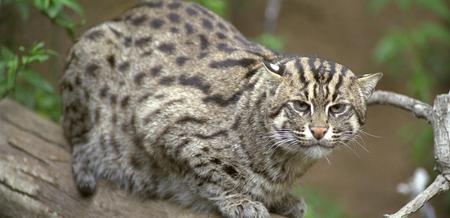
Bobcats are more easily trapped than are coyotes or foxes, but the bobcat’s reclusiveness makes set locations difficult to find. When hunting, bobcats use their sense of smell less than coyotes do, so lures and baits are usually not effective. The bobcat’s acute vision, hearing, and inquisitiveness however, can be capitalized upon. Even with the best sets, bobcats cannot be lured from their course of travel more than a few yards. The bobcat’s use of dense cover for capturing rodents and rabbits can be used in capture techniques to guide the animal or even its footsteps.
In the past, the demand for bobcat pelts was moderately high due to fur values. This had encouraged late fall and winter harvest periods. Also, the bobcat’s high fur quality attracts harvest for recreation or utility. If bobcat depredations are common over time, consider inviting a fur trapper to take bobcats during prime fur periods. Fewer bobcats may result in less competition for native foods and less depredation around the habitat they use.
Fur trappers may undertake the capture and relocation of bobcats during spring and summer months from areas where depredations are occurring in return for fur trapping rights during fall and winter months. Many of the same sets used for foxes and coyotes will also catch bobcats. Few sets that target bobcats will catch other predators. Bobcats can be led by guide sticks or brush to dirt hole or flat sets where proper lures are used. Identification of bobcat sign is, of course, critical.